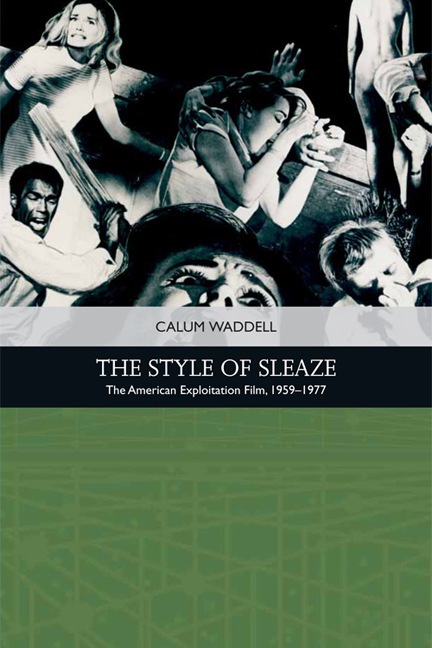Book contents
- Frontmatter
- Contents
- List of Figures
- Acknowledgements
- Introduction
- 1 Not Quite Hollywood
- 2 Emerging from Another Era – Narrative and Style in Modern Exploitation Cinema
- 3 Can We Call It Sexploitation?
- 4 Sex Morality Plays: Character in Adult Cinema
- 5 The Body is Everything: Sexploitation Spectacle
- 6 Exploitation-Horror Cinema
- 7 Cannibalising Tradition: Romero’s Zombies and a Blood Feast
- 8 Slash and Burn: The Exploitation-Horror Film in Transition
- 9 Blaxploitation Cinema: Race and Rebellion
- 10 Sex, Violence and Urban Escape: Blaxploitation Tropes and Tales
- 11 The Blaxploitation Female
- 12 Exploitation as a Movement
- Select Bibliography
- Index
8 - Slash and Burn: The Exploitation-Horror Film in Transition
Published online by Cambridge University Press: 11 November 2020
- Frontmatter
- Contents
- List of Figures
- Acknowledgements
- Introduction
- 1 Not Quite Hollywood
- 2 Emerging from Another Era – Narrative and Style in Modern Exploitation Cinema
- 3 Can We Call It Sexploitation?
- 4 Sex Morality Plays: Character in Adult Cinema
- 5 The Body is Everything: Sexploitation Spectacle
- 6 Exploitation-Horror Cinema
- 7 Cannibalising Tradition: Romero’s Zombies and a Blood Feast
- 8 Slash and Burn: The Exploitation-Horror Film in Transition
- 9 Blaxploitation Cinema: Race and Rebellion
- 10 Sex, Violence and Urban Escape: Blaxploitation Tropes and Tales
- 11 The Blaxploitation Female
- 12 Exploitation as a Movement
- Select Bibliography
- Index
Summary
The late Wes Craven created one of the most notorious films of all time with The Last House on the Left, a loose remake of The Virgin Spring (Ingmar Bergman, 1960). In doing so, Craven took the horror spectacle of Night of the Living Dead and increased the verisimilitude of torture and death to agonisingly convincing heights (or depths, as some critics of the time concluded). As a consequence, the film was banned in Britain for decades – even, belatedly, becoming one of the famous ‘video nasties’ more than a decade after its conception. And, as with Night of the Living Dead, there has been a contemporary critical movement to rediscover and ‘culturally reframe’ the film as ‘art’. At least one thing I do want to conclude is that, ‘art’ or otherwise, The Last House on the Left – as with The Devil in Miss Jones – represents the most successful stylistic achievement of its genre.
The Last House on the Left certainly feels transgressive, even by today's standards of ‘torture porn’, splatter remakes and controversial direct-to-video schlock such as Gutterballs (Ryan Nicholson, 2008). For a start, the film humanises a quartet of murderous rapists – one of whom weeps following his torture and molestation of a 17-year-old female. This radical humanisation of ‘evil’ characters confuses our identification with the villains. One critic of the time commentated: ‘Lingering gore, senseless cruelty, sadism and fetishism shock and dismay viewers.’ Even some of the genre's most famous critics found themselves unsure of how to approach Craven's debut film. Celebrated Fangoria contributor Chas Balun would write that The Last House on the Left should be scorned for its ‘explicit horror and mayhem … one of the most repugnant “horror” films ever made’. Similarly, Tobe Hooper's later The Texas Chain Saw Massacre would be banned in Britain for ‘the limited encouragement of identification with the innocents’. The Texas Chain Saw Massacre's spectacle was also criticised for being ‘very persuasive’. The exploitation-horror film was successful in evolving its presentation of actuality to such an extent that censors and critics seemed conflicted as regards how to express their feelings about the obvious simulations on-screen in relation to the power (even if it was the power to offence) that they contained.
- Type
- Chapter
- Information
- The Style of SleazeThe American Exploitation Film, 1959–</I>1977, pp. 124 - 139Publisher: Edinburgh University PressPrint publication year: 2018



